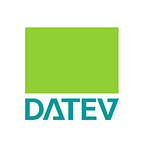One Year of Reading Group
Von: Neha Pawar
Lately, Artificial Intelligence is a trending keyword used in daily Business conversations. 2020 has also been the year, where a boom was seen in AI being used in the Private Industries.
But what lies behind an over-enthusiastic AI sales pitch?
How realistic are our expectations from an Algorithm? Is AI so amazing that it can already replace humans in conversations? This was the controversial hype around the GPT-3 in Language Generation. It later failed at a crucial medical conversation: Medical chatbot using OpenAI’s GPT-3 told a fake patient to kill themselves (artificialintelligence-news.com).
Apart from such fanatical claims, there are concerns about the problems that AI introduces into an existing system. The bias in the data and its propagation through a system, is a cause for worry. Don’t get me wrong. Of course, there are ways to reduce these biases. But honestly, there’s still a long way to go.
The above are just some of the concerns why it all began: AI Lab Reading Group.
Along with the growing number of sales pitches are the growing number of research papers getting published with each new conference. Let’s just take an example from the NLP (Natural Language Processing) research community, in the below graph (taken from ACL. More about ACL here: 2020).
In 2020, ACL received 3429 submissions. As you can imagine, keeping in touch with the latest Research is a task. But it is the only accurate way to evaluate a particular algorithm before using it in an experiment.
05.03.2020 marked the beginning of the Reading group in DATEV. A year and 9 sessions later, I can attest that it has helped having the Reading blocker on my outlook. It started with five of us in the first session. And although the number hasn’t changed much, it has bought new participants to the group now and again. The participants have always bought with them: fresh views, thoughts, skepticism, and excitement. All of these being important factors in a research community.
The idea behind the group is to read, debate and learn about old/new research being published. The Format is as follows:
- Read the paper before the meet.
- Discuss it at the meet. (in German/ DEnglish)
- To keep the session interactive, we take turns starting off a discussion about each section in the paper. This ensures that each participant gets to discuss a part of the paper.
One point, which has been important for us, is that the attendees read the paper (or at least make an attempt to understand a section in it) so as to contribute to the community learning.
On 25th March, we are reading a much-awaited paper by Timnit Gebru: On the Dangers of Stochastic Parrots: Can Language Models Be Too Big? “1F99C (washington.edu). This paper aims at addressing the accountability concerns in the field. With the size of the deep learning models increasing at an unprecedented scale, it has led to a domino effect of problems. One such problem, is the increase in the carbon footprints and the financial costs.
Photo by Alexander Sinn on Unsplash
